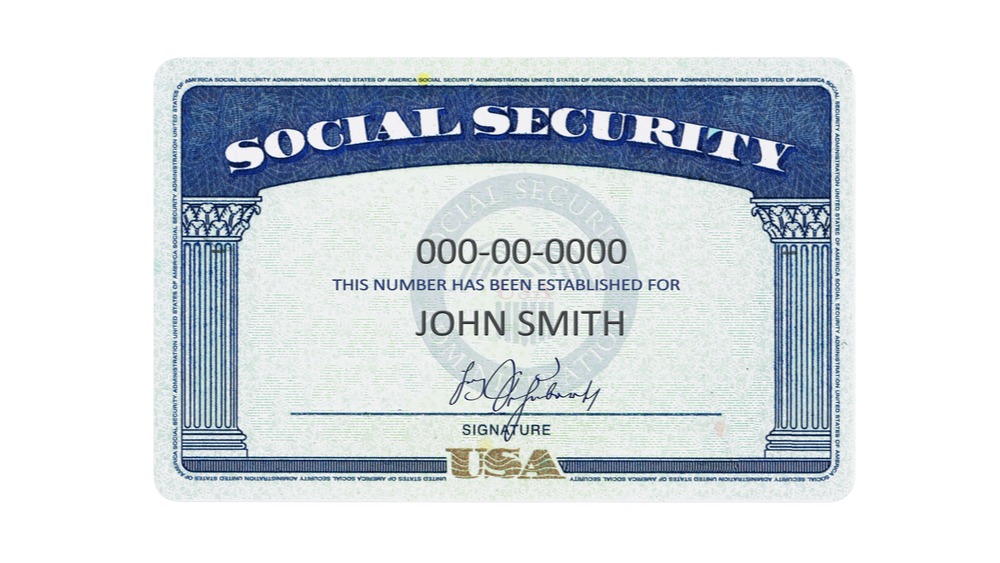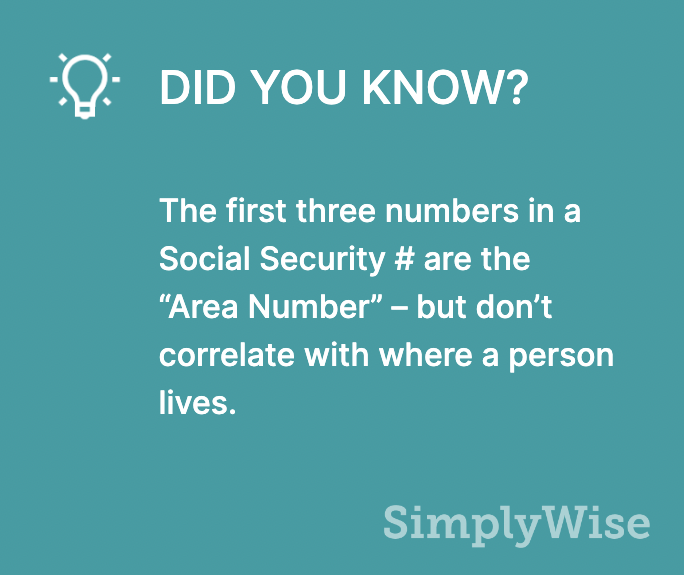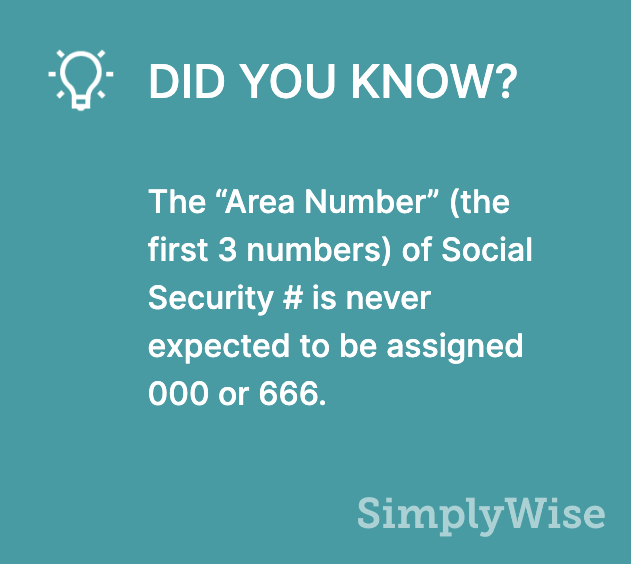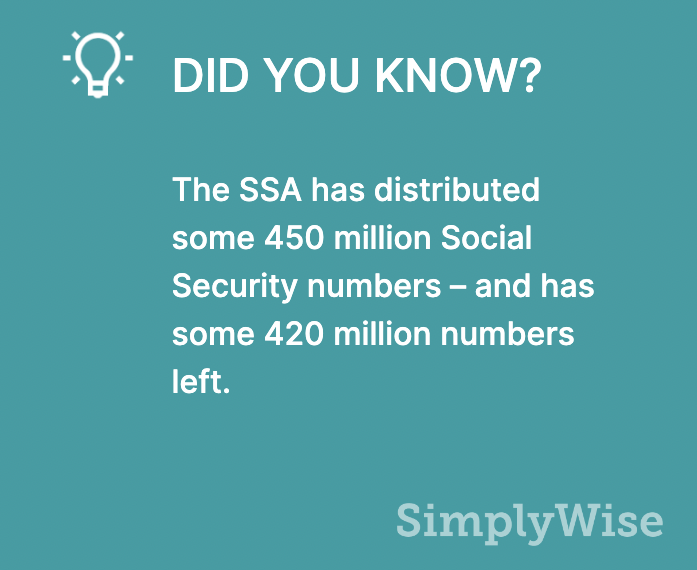
Most of us don’t really know what our Social Security number means. Why is one person’s number so very different from someone who was born in the same hospital a few years later? Do they recycle Social Security numbers? What do those three sequences represent? And what is a Social Security number?
According to the Social Security Administration’s history of Social Security numbers, the numerical sequence was the system the three-member Social Security Board finally agreed on to enable them to track workers’ earnings throughout their lives. They couldn’t just use people’s names and addresses, because people move around. Besides, using just names and addresses could lead to a lot of confusion. As one 1937 article noted:
“A recent news account states that the Fred Smiths of New York City have had so much trouble in being identified by their creditors, the courts, and even their friends, that they have joined together in forming the ‘Fred Smiths, Incorporated,’ to serve as a clearing house for their identification problems.”
So, they had to come up with a more unique identifier. The Social Security number, now used by most agencies and businesses to identify individuals, is the one they landed on.
How are the first 3 digits of your social security number determined?
1936-1972
The first three numerals in a Social Security number are called the Area Number. The area number doesn’t correlate with where the worker lives. Initially it might have been designed to do so, but it didn’t really turn out that way.
After a lot of deliberation and debate about how to distribute Social Security numbers to the workers of America, it was decided to send out 10,000 numbers to each post office in the country to distribute to people registering for the Old Age Pension fund. In general, the lower numbers were given on the east coast and the numbers rose the farther west the post office was. As you can imagine, some post offices ran out of numbers faster than others.

However, not all the workers got Social Security numbers in their own postal districts. There was no rule you had to apply for Social Security in the state where you lived—you could apply anywhere. Also, many big corporations with employees around the country had their employee register in the state where the corporation was based. So, someone who lived in Las Vegas might have a Social Security number from the Chicago area. You can find a list of these area numbers on the Social Security website.
1972-Present
Starting in 1972, the administration moved the processing of all Social Security applications to Baltimore. After that, the area number reflected the zip code of the applicant’s mailing address. But many people have mailing addresses in places other than where they live. Then around 2007, the administration started working on a plan to address the fact that some heavily populated places were running out of numbers while sparsely populated places had more than enough. They decided to start randomly assigning numbers out of the remaining pool and began doing so in 2011. Now the area numbers don’t really correspond to anything geographical.
Exceptions
There are some interesting exceptions to the area numbers corresponding to a place—even before 1973. For example, until 1963, sequence 700-728 belonged to railroad workers. More recently, numbers 729-733 were allocated to the Department of Homeland Security to be issued through the Enumeration at Entry program. The number 586 was divided among American Samoa, Guam, the Philippines, Americans employed abroad by American employers. Numbers 587 through 588, and numbers 589 through 595, were assigned to Mississippi and Florida, respectively, to be used after those states exhausted their initial area numbers. Another interesting point: No area is ever expected be assigned 000 or 666.
The second 2 numbers: Group number
Periodically, a rumor goes around that the group number identifies a particular racial group. That’s not true. The group number was actually created to help SSA employers whose records at that time were kept in filing cabinets, so that finding anything required very specific coding.
So the thousands, and then millions, of workers were “grouped” into sections. First they were divided by area number, then separated by a pattern of numbers that make up the two-digit group number. The group records follow this pattern. The first group of numbers in a given area would be followed by odd numbers from 01 through 09. For example if the area is 555, the group numbers would be 555-01, 555-03, 555-05….
When they’ve issued 555-09, they would switch to even numbers from 10 through 98, such as 555-10, 555-12. Once they run out of these numbers, they switch to even groups 02-08, followed by odd groups 11-99.

The last 4 numbers: Serial Number
The last four digits are the serial number. In each group, the serial numbers run consecutively from 0001 through 9999.
What does your SSN reveal about you?
Not much. The first three numbers might tell where you were when you applied, or where you had a mailing address when you applied, or where your employer was based when you applied, or nothing about your whereabouts at all. They don’t tell anything about where you are now, or where you’ve been since applying. The second number gives a very rough idea at what point in the last 100 years you might have received your number. But in order to guess that, someone would have to know how many numbers were given out with a specific area number over each of the last 80 years.

The last four give a slightly closer approximation—but only slightly.
At one point the people debating how to identify workers considered using fingerprints, like the armed services did. But then it was decided that many people associate fingerprinting with criminal activity, so that idea was discarded. The current system reveals much less than a fingerprint would have.
Do they recycle Social Security numbers?
At first, they thought they would recycle numbers. One of the early ideas was to make the group number correspond to the year someone would turn 65, then give the number to someone else. But there were unemployment compensation delegates to the Social Security Board who worried that workers would falsify their age, perhaps to retire early or work longer. The next plan was to have a two-digit month of birth, but that was also rejected. The final decision was that the middle two digits wouldn’t reflect age at all but would be used as a group number that would help the existing punch card machines sort the various applicants and recipients.
Will they run out of Social Security numbers?
At present, the SSA has distributed some 450 million numbers and has some 420 million numbers available for distribution. So it’s likely the system will be around for awhile. Unfortunately, because data entry has sometimes been done by people, one study showed many people have multiple Social Security numbers associated with their names and many Social Security numbers are associated with up to five people. No system is foolproof. But most people have only one Social Security number that can be used to ensure they receive the benefits they have worked toward all their lives.
Because of the importance of this number, it’s key not to share it as a form of identification unless absolutely necessary. You are, in general, the only person in the world with your number. That’s pretty special.